Succession Planning Tools & Templates
Free Succession Planning Templates Library
To complement our Succession Planning Services, we have developed a library of free succession planning templates and tools that will support your organization’s initiatives. For a complete printable version of all of our succession planning templates and to learn more about our succession planning process, download SIGMA’s Succession Planning Guide below.
Succession Planning Guide
SIGMA’s Succession Planning Guide includes our most important templates in chronological order, as well as instructions and examples to guide you through SIGMA’s six-step succession planning process.
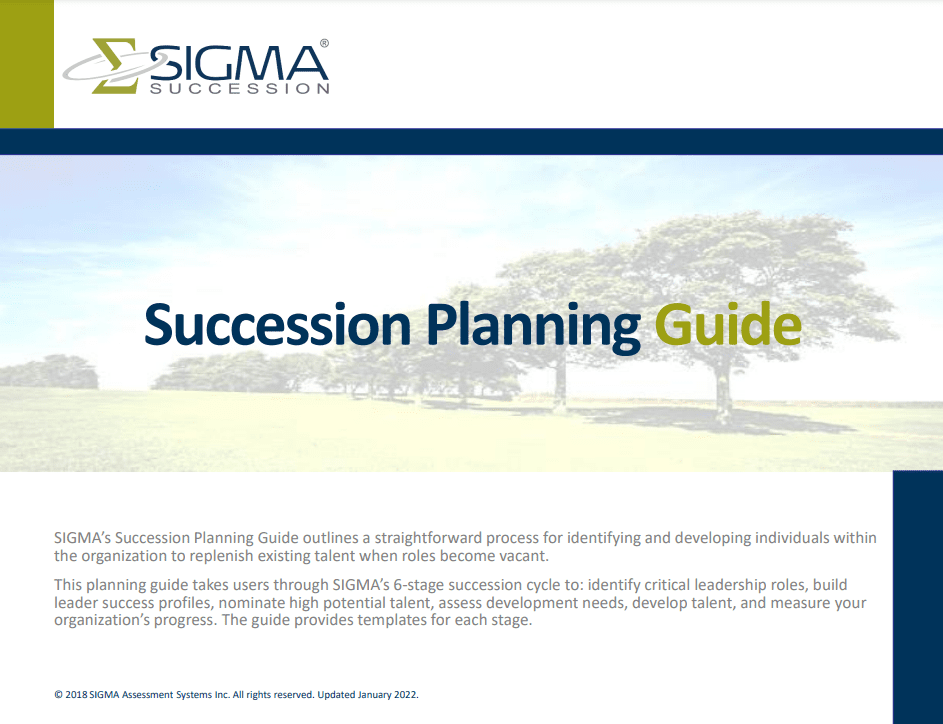
What is a Succession Planning Template?
A succession planning template is a tool that can be used to help move a business along each stage of the succession planning process. Each of our templates provides checklist items, forms, and development plans to propel your business’s succession planning efforts further.
Browse our library of templates below to get started.
Succession Planning Templates
Critical Roles Identification Questionnaire
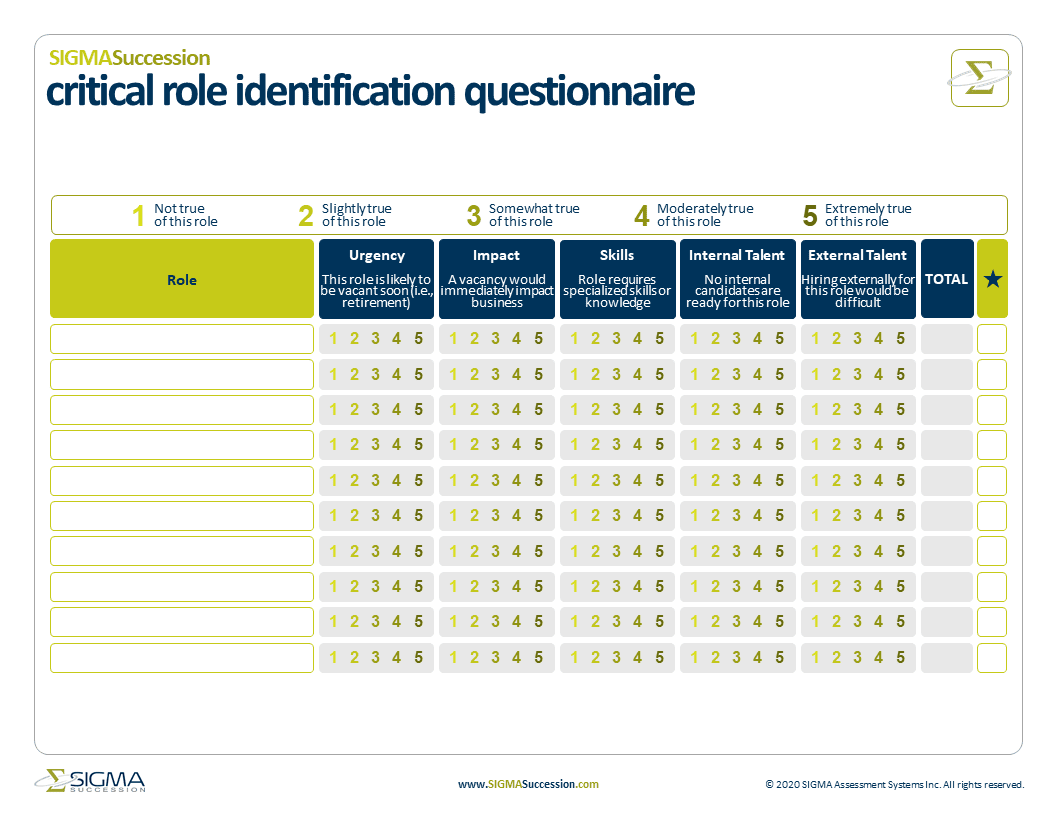
The Critical Roles Identification Questionnaire is a succession planning template that will help you to identify those key roles that your organization should target in your succession program.
Success Profile Template
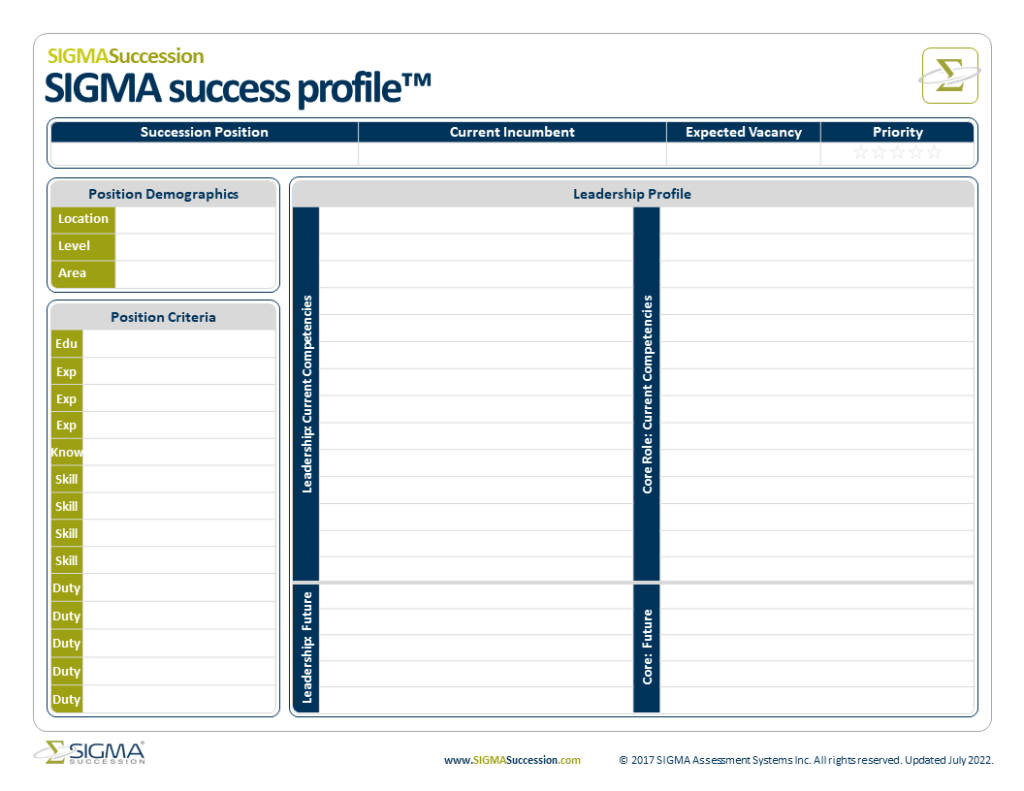
The Success Profile Template is a succession planning worksheet designed to describe the talent needed for success in a key role.
Succession Nomination Survey Template
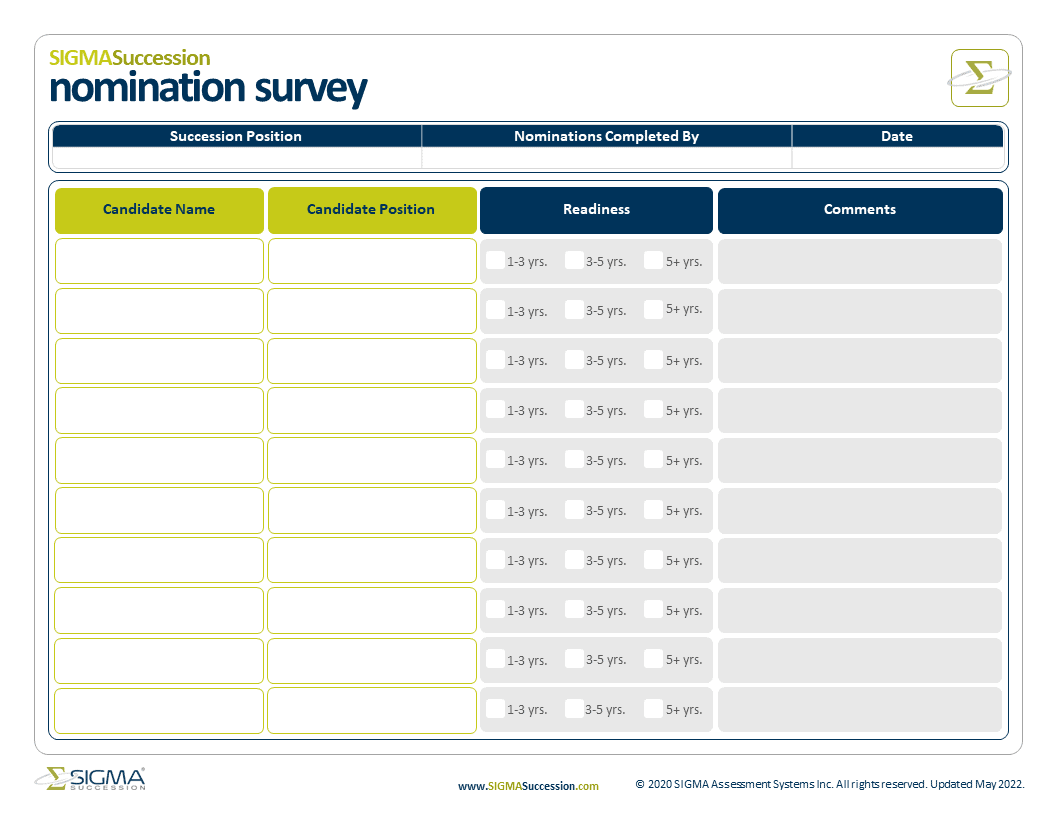
The Succession Nomination Survey is a simple succession planning tool that can be used to identify which candidates to consider for the critical roles you identified in phase one.
Succession Bench Template
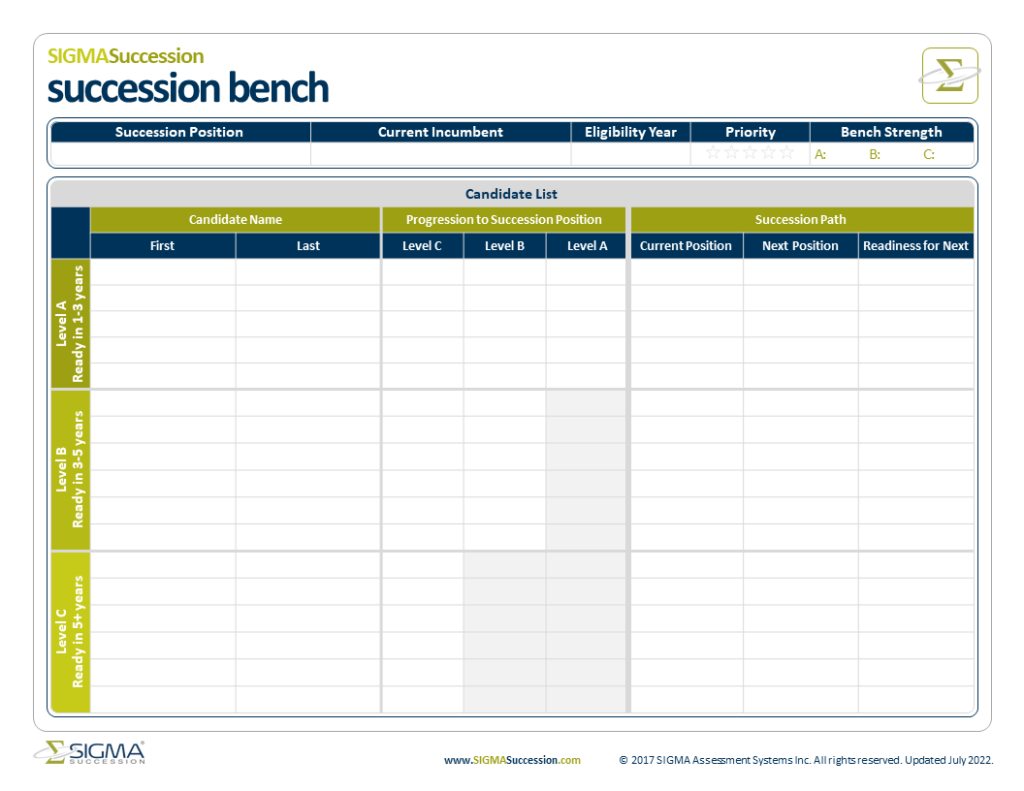
The Succession Bench Template is used to evaluate the overall readiness of your succession candidates for a role.
Candidate Succession Profile Template
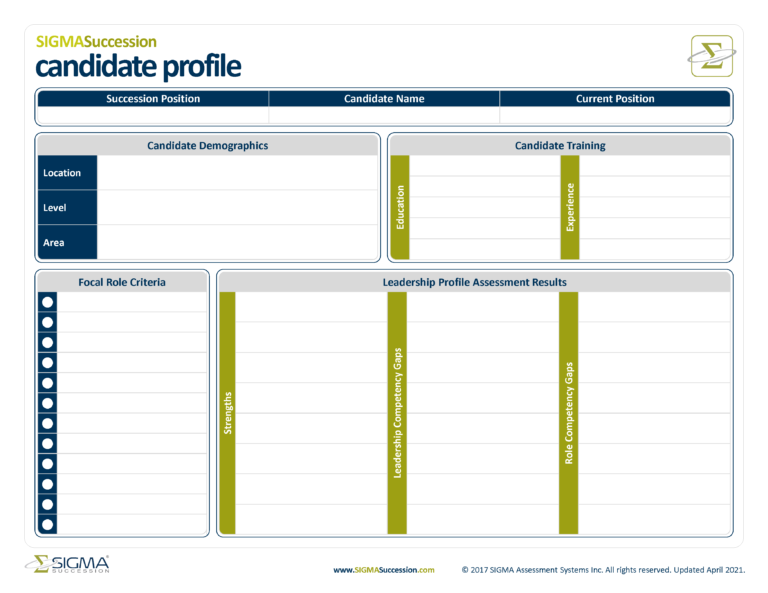
The Candidate Succession Profile Template is designed to identify gaps between the requirements for a role and the potential candidate being developed for that key leadership position.
Development Actions Form
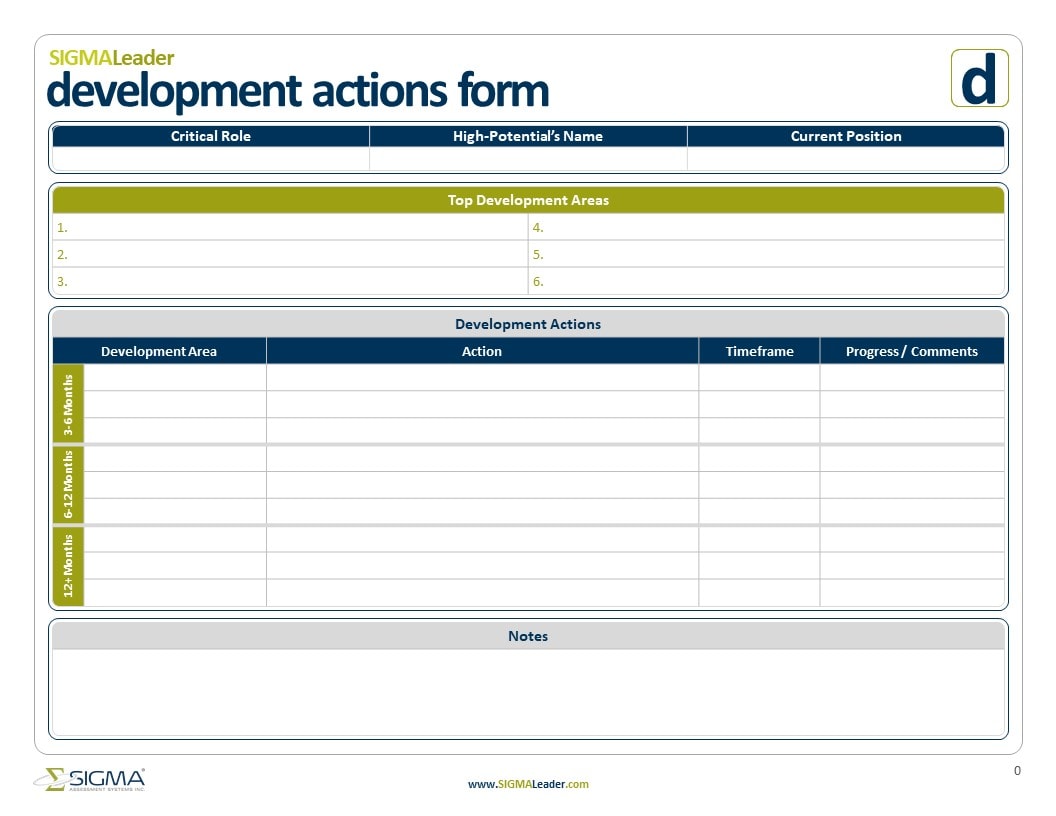
The Development Actions Form outlines a succession candidate’s goals, action plans, and milestones for their growth and development.
Talent Progress Scorecard Template
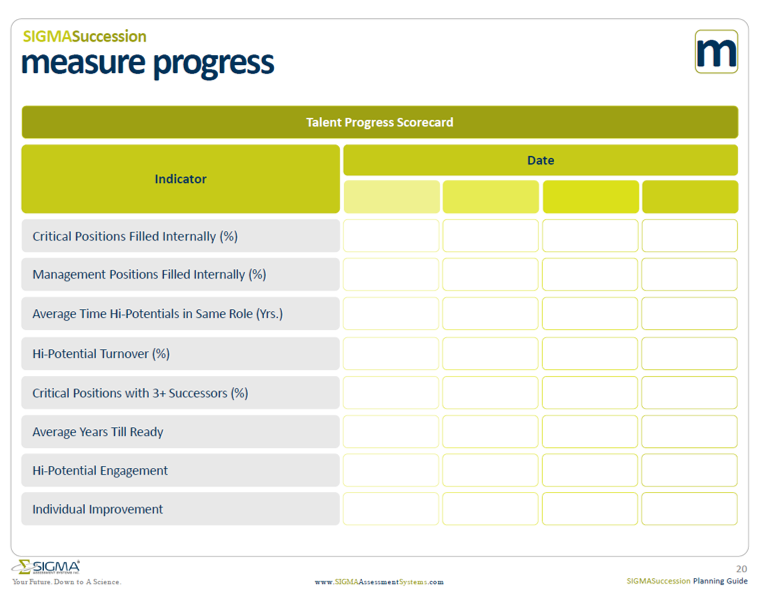
The Talent Progress Scorecard Template allows you to review the outcomes of your business succession plan across several important indicators.
Succession Planning Guide
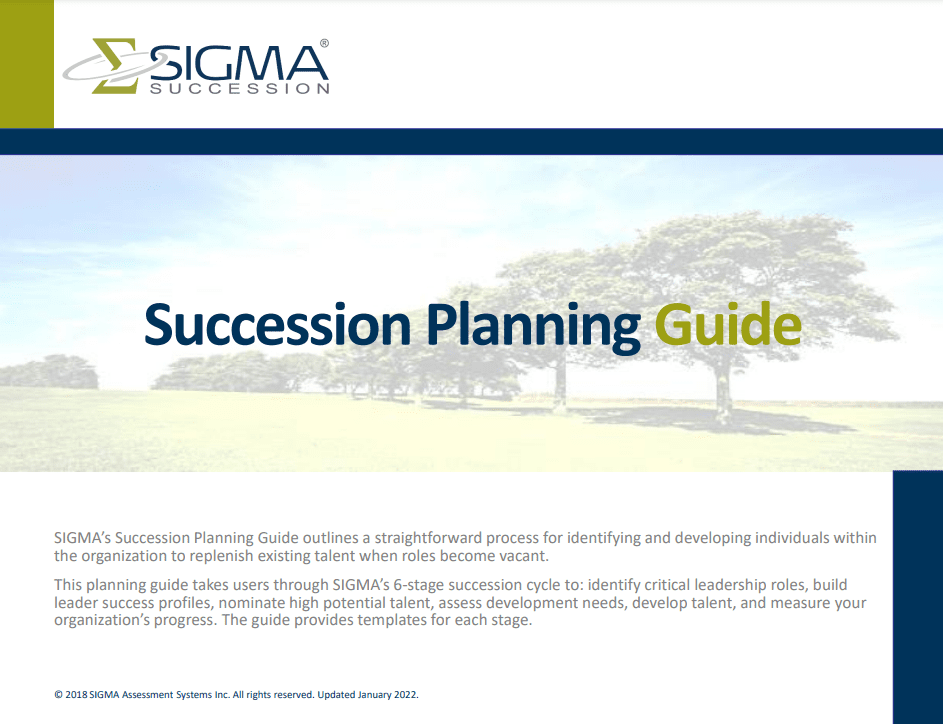
Our succession planning guide will walk you through what is required at each stage of the succession process along with some helpful tips to get you started.
Succession Planning Checklist
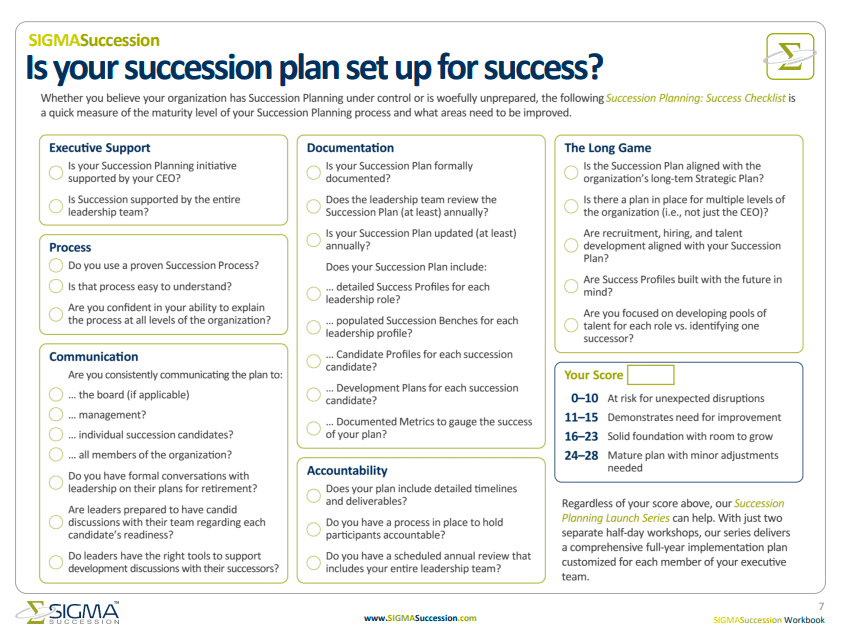
The succession planning checklist is a quick measure of the maturity level of your succession plan and what areas need to be improved.
Succession Planning vs Replacement Hiring Checklist
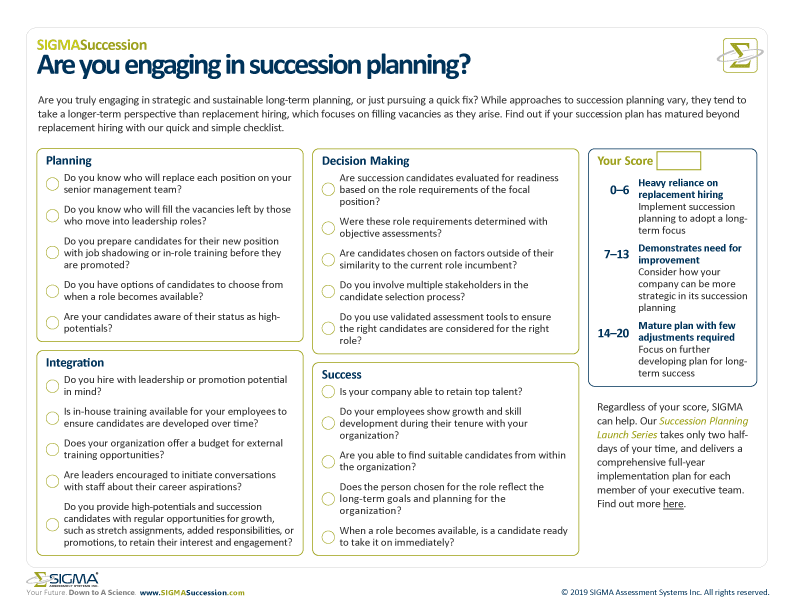
The succession planning vs replacement hiring checklist will help you identify if your organization is engaging in strategic long-term planning or settling for a quick fix.
Developing a Succession Plan that Supports Diversity
In this guide, we discuss the importance of diversity, how building diversity can benefit your team, and how you can use succession planning to create a leadership development program that supports diversity.
Download All Succession Planning Templates
If you would like a copy of all the templates you need to create your own succession plan, download SIGMA’s comprehensive Succession Planning Guide. This free guide includes our most important templates in chronological order, as well as instructions and examples to guide you through SIGMA’s six-step succession planning process.
Our succession planning template available in this free download will walk you through what is required at each stage of the succession process, along with some really helpful tips to get you started. Inside you’ll find functional templates and tools to help you along every stage of your succession planning process, including measuring the maturity of your current process, determining where to focus limited resources, defining what is required for success at each role, identifying those succession candidates, building and measuring your talent bench, documenting development needs, tracking progress and identifying those really important development opportunities, and finally, measuring and communicating the success of your process which we think is really the most important part of the processes, is closing that loop. Hopefully this template helps you develop and get started on your succession planning process. If you need help getting started, take a moment to check out our “Succession Planning Launch Series” which offers a simple and cost-effective way to build a robust process and ensure your organization’s leadership is positioned for success and prepared for the unknown. Contact us to learn more about our Succession Planning Launch Series that delivers a custom succession plan in just 30 days, while requiring less than eight hours, essentially two half-day sessions, from your leadership team.
Browse Templates by Process
IDENTIFYING CRITICAL ROLES
Determine which roles your organization should target through its succession program.
BUILDING SUCCESS PROFILES
Describe the talent composition required for each critical role today and in the future.
NOMINATING SUCCESSORS
Choose candidates for each critical role through a nomination survey.
ASSESSING SUCCESSION NEEDS
Summarize each candidate’s talent profile and identify gaps to target through development.
DEVELOPING TALENT
Prepare development plans for candidates and track their development activities.
MEASURING PROGRESS
Measure the impact of your succession plan.
Need Help Getting Started?
SIGMA’s Succession Planning Launch is an efficient and affordable solution designed to establish a strong succession planning process and fortify leadership for optimal performance, even in unpredictable circumstances. Contact our team today to learn how we can deliver a full-year, custom succession plan in just two half-day workshops.
Succession Planning Template FAQs
A succession planning template can be a process or a tool. As a process, a succession planning template outlines the steps an organization can follow to build a strong succession plan. SIGMA uses a six-step process, which is unique because it not only helps leaders create a plan, but it also helps organizations establish an ongoing talent development program. This ensures that the succession plan will be sustainable over time, and replicable as new employees join the talent pool.
As a tool, succession planning templates may consist of checklists, forms, development plans, etc. SIGMA’s templates are built to correspond to a particular step in the succession planning process. For access to all of our templates in chronological order, download SIGMA’s free Succession Planning Guide. The guide walks you through our six-step succession planning process AND includes all the templates you’ll need along the way.
SIGMA’s succession planning templates provide a structured approach to identifying and developing future leaders, ensuring a smooth transition during leadership changes. They can also help organizations save time, provide consistency, and help align talent development with strategic goals.
Yes, SIGMA’s succession planning templates can be adapted for use in various industries. While the specific terminology and requirements may vary, the underlying principles of identifying and developing talent for leadership roles remain relevant across different sectors.
Yes, SIGMA’s succession planning templates can be beneficial for organizations of all sizes, from small businesses to large corporations. The templates can be scaled and adapted to meet the specific needs and resources of your organization.
Yes, our succession planning templates address both internal succession (promoting from within) and external succession (bringing in talent from outside). The templates can be tailored to suit your organization’s specific needs in either scenario.

Want to Learn More About our Succession Planning Methods?
Glen Harrison is a senior consultant who specializes in organization transformation and succession planning. He has worked with many Fortune 500 companies and government organizations in Canada and the United States. Glen has helped numerous clients build strong succession plans using SIGMA’s products and services to unlock their people potential. Contact Glen today and learn about how SIGMA can help you develop your leaders. We would love to hear from you!





